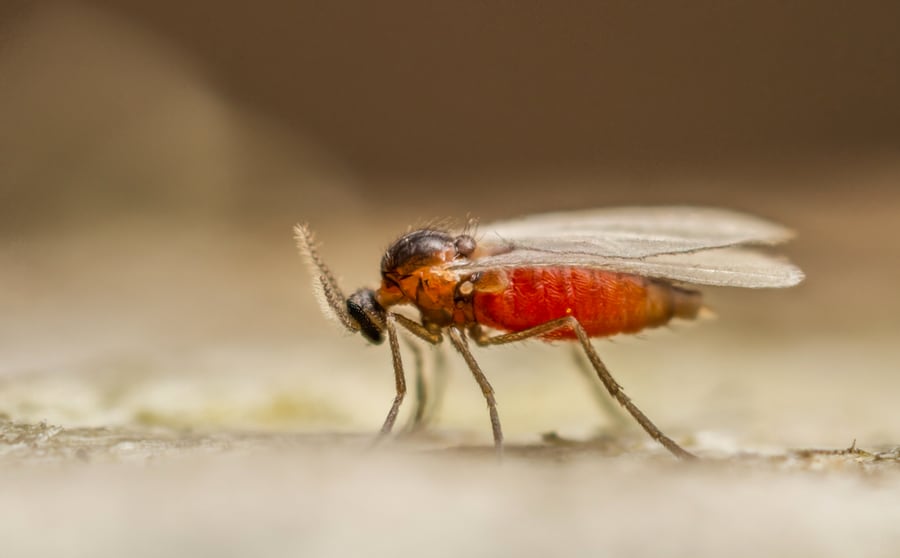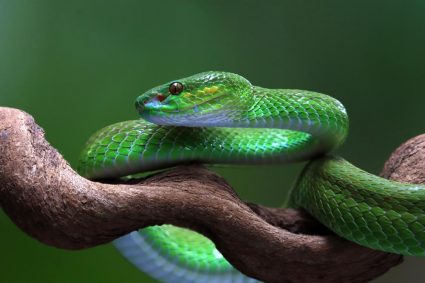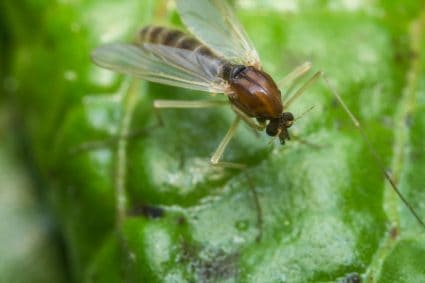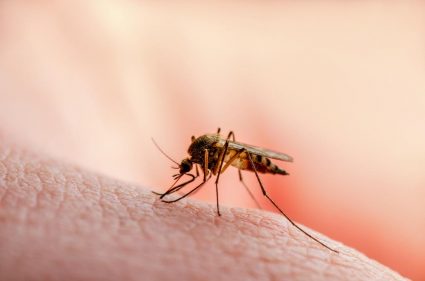
Gnats enter fridges for many reasons, like dirty and damaged refrigerator parts, which we will discuss later in the article.
However, seeing these tiny bugs in your refrigerator is not a good sign. For one, the temperature is too cold for their tiny bodies, and they may freeze until they die. Soon after, dead gnats in your fridge may introduce unpleasant odors into your house.
In this guide, we will discuss practical steps to keep these unwanted visitors out of your fridge.
Gnats enter through cracks and holes and head for moisture and food sources. One of their favorites is in the refrigerator. However, these tiny insects breed fast.
So, it is important to address a potential infection before it gets out of hand.
Below is a step-by-step guide to keep these unwanted visitors out of your fridge:
- Clear out your refrigerator.
- Remove your refrigerator shelves and drawer.
- Clean your referigerator.
- Return good items to the fridge.
- Conduct an efficiency test.
- Store a glass of red wine in your fridge.
With these six steps, gnats will stay away from your fridge permanently. Read the guide to learn what each entail.
In the following headings, we will take you through six practical steps to keep gnats at bay from your fridge. But, to understand how to deter these bugs, you must note a few things.
First, you must learn how they operate and how to tell them apart from other household insects. So, let’s start with a little gnat introduction.
What Exactly Are Gnats?

Although gnats resemble fruit flies, these biting insects belong to their own category. While fruit flies have a more rounded figure, similar to houseflies, gnats are longer, with dangling legs, like mosquitoes.
They fly solo and are drawn to wet surfaces like puddles, wet soil, spoilt food, ripe fruit, and overwatered plants. While they don’t do much damage in the home, gnats can spread through their bites.
Why Are Gnats Drawn to Fridges?
Like humans, gnats love the fresh smell of food from the fridge. But apart from smells, gnats love moisture and will go anywhere they see one.
Some fridges come with water dispensers, creating a dampness that attracts gnats. It starts with a little hovering around the fridge, and with time, gnats slip through the gaskets.
A gasket is a rubber seal or elastic band that runs around the refrigerator door to regulate the temperature inside. It keeps outside air from entering the cooler fridge, maintaining your fridge’s cold temperatures.
Most people do not notice the impact of this lining until it gets bad. Then, the fridge may not keep food cold for long.
Poor or damaged sealing can cause gnats, flies, and other insects to infest the fridge. When gnats get past the gasket and into the fridge, the extreme temperature weakens them.
As a result, they find it difficult or near impossible to fly out and die in a few hours. But, before then, they crawl around the fridge and nibble on the food stored there.
This is not exactly healthy, as these insects carry germs that can make you and your family sick. Now, we move to some practical ways to keep them out for good.
6 Steps To Keep Gnats Out of Fridges
Having understood why and how gnats enter refrigerators, let’s move over to some steps for removing them.
Below are some tested and trusted procedures:
Step #1: Clear Out Your Refrigerator

You can’t get much done with a fridge full of food. So, let’s start with removing everything inside your fridge, from food to snacks, drinks, and even bottled water.
If you haven’t had time to deep clean your fridge in a while, here is a perfect opportunity. As you remove food from your refrigerator drawers, check the labels for their expiry dates.
This can help narrow the source of the gnat infestation, whether spoilt food or fruits. But before all these, turn your refrigerator off and unplug it from its power sources.
Step #2: Remove Your Refrigerator Shelves and Drawer

Unplugging your fridge from its power source activates the defrosting process. This makes it easier to pull out shelves and thoroughly clean the fridge.
Allowing your fridge to defrost this way is also good for its maintenance. With constant usage, ice tends to build up in the refrigerator.
This consumes more electricity and reduces its efficiency in keeping things cold. But with routine defrosting and cleaning, you can maintain optimal performance.
Step #3: Clean Your Refrigerator

By now, all the ice should have melted and become easy to scrape off. You can use a scraper to remove the ice, depending on how long it has been since you last cleaned.
Ensure that there is a bucket and sponge close by because as the ice melts, it turns to water quickly. This water will typically drip down the freezer walls, so you must act fast to wipe them up.
After wiping the water, carefully clean the fridge, drawers, and shelves. These are typically glass or plastic materials you can easily wash in the sink.
Wash with dishwashing soap, towel dry, and return to the fridge. Keep the fridge door(s) open until completely dry.
Step #4: Return Good Items to the Fridge

After cleaning your fridge, you will notice that it is bare and free from lingering insects. At this point, you should have thrown away all spoilt or stale food and other expired items.
Wash the good food and vegetables you intend to return to the freezer down to jars and bottles. This will help eliminate all traces of dirt and decay and prevent re-infestation. Washing with tap water also helps remove insects that are too tiny for human eyes to see.
Now, connect the refrigerator to the power source and turn it on.
Step #5: Conduct an Efficiency Test

Earlier, we identified one of the reasons for a gnat infestation as a damaged refrigerator gasket. This is characterized by an open refrigerator door that doesn’t close well enough.
But how can you tell if your gasket is broken? Because sometimes, the signs are not obvious.
In that case, you may need to carry out a fridge door efficiency test. This involves getting a paper strip, placing it between the fridge and its door, and closing it.
Next, gently pull out the paper from this enclosure. If there is friction and it feels tight against your hand, there’s no need to worry.
But, if the paper slips out easily, that’s your sign that the gasket is gone. You may need to repair it or replace the refrigerator altogether.
Step #6: Store a Glass of Red Wine in Your Fridge

Now that you have cleaned your fridge to remove existing gnats, how do you prevent them from returning? Remember that gnats are tiny insects, and you can’t monitor your refrigerator around the clock.
Instead, you need some preventive measures to deter gnats from entering. One of these strategies is using red wine.
Place an open glass of wine somewhere in your refrigerator and close the door shut. Any gnat that can get past your fridge door will naturally be drawn to its fruity scent.
Once trapped in the glass, the alcohol in the red wine will finish the job, killing the gnats. White vinegar is an alternative, but only if you can stand its acidic smell.
This strong smell will produce a different reaction than red wine. It will repulse bugs, freeing your fridge from crawling and flying insects.
Conclusion

Gnats enter through cracks and holes and head for moisture and food sources. One of their favorites is in the refrigerator. These tiny insects breed fast.
So, it is important to address a potential infection before it gets out of hand.
In the article, we explained why these insects hang around fridges and provided steps to keep them out. Follow them carefully to keep your fridge clean and safe from bugs.
Frequently Asked Questions
Can I Use Pesticides Inside My Fridge?
Unfortunately, pesticides are unsafe for contact with food, as they pose health hazards. Using them inside your fridge can contaminate your food, putting all persons who eat them at risk.
Do Chemical Sprays Work Against Gnats?
A chemical spray is often the quickest way to rid your house of gnats. However, using these chemical products around food or vulnerable people is not advisable because of their toxic content.










